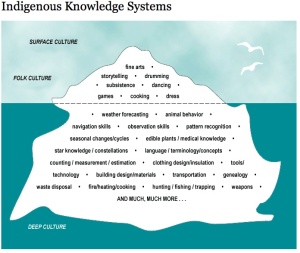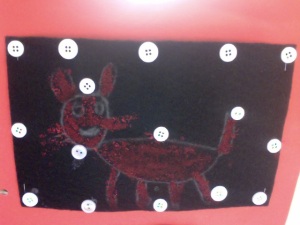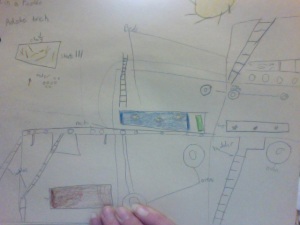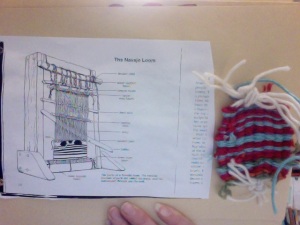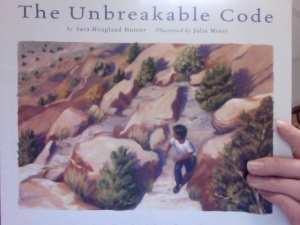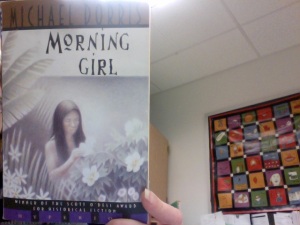We just finished our first social studies unit, Native Americans. I like to spend some time reflecting on the unit: things that went well and things that I might change the next time that I teach the unit. I wanted to make these reflections public because it is a great opportunity for families to step inside our classroom to see what we did during our social studies time.
Beringia (Land Bridge):
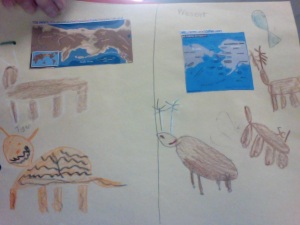
http://www.nps.gov/bela/historyculture/beringia.htm
Most of my content knowledge about Native Americans is rooted in the Northwest. I lived in Alaska for three years. Becoming a certified teacher in Alaska meant that I needed to take two special courses for certification: 3 credits in multicultural education and 3 credits in Alaskan studies. That, combined with living in the “bush”, gave me some background knowledge to begin the unit on Native Americans.
Looking back, I am glad that I made the decision to begin in the Northwest. Having that background knowledge and depth of content gave me the language and experience to get the students “hooked” into this unit. It also made sense to begin by answering the question: How did the Native Americans get here? (This, I believe is an important question to consider given that our next unit is about Explorers.) As we talked through the different regions of North America, the flow and sequence felt right because we could find connections from different regions and discuss how some of those connections could be traced back to the idea of how many Native Americans entered into North America.
This iceberg chart was a staple in my studies and indigenous curriculum in Alaska. I tried to incorporate it as best as I could throughout the unit on Native Americans to show a complete picture of Native American groups. It was easiest for me to do with the Northwest tribes.
Northwest:
In the Northwest we talked about homes, the use of natural resources–especially salmon, food preparation, cultural aspects (button blankets, totem poles).
Southwest:
We really focused on the Navajo of the Southwest. We created our own mini-samples of Navajo weavings, created clay pottery (uses of the earth), homes, and natural resources.
Plains:
In the Plains we talked about the idea of being nomadic, the buffalo, homes, and Crazy Horse. The story about Crazy Horse was inspiring, and students should know about the monument and vision being built in his honor. (Ironically, it is very close in proximity to Mount Rushmore.)
http://crazyhorsememorial.org/
Eastern Woodlands:
The Eastern Woodlands focused on natural resources and homes. (We did not have as much time to focus on this region, but I am hopeful that we will return to some of these ideas when we teach Pennsylvania.)
Legends:
This is an aspect of the unit that married well with reading. We read numerous legends from each region as a way to learn more about the people and their culture. We came to identify common elements in legends: hero, mythical qualities, cultural aspects, elements of truth, and a meaning to the story (something that we should learn). Some of the legends (a sample list) of the legends we read included:
*The Raven
*Gift of the Sacred Dog
*Clamshell Boy
*Ka’ha’si and the Loon
*Legend of the Indian Paintbrush
*Turquoise Boy
It was great to see how students made connections between various legends. As part of each region, students had to select a legend to analyze the components and record in their reader’s notebook. They were great activities for teaching text-to-text connections, story structure, and character traits.
Research:
Throughout this unit, students would conduct research each time we entered a new region. They read non-fiction material to identify and record pertinent information about that region. This was great practice for learning how to capture important notes/points and how to put things into your own words. Students learned how to utilize the structure of non-fiction books in order to locate information more easily.
2 sides to every story:
I felt that it was important to present some heavy issues during our unit on Native Americans. It was important to break stereotypes and share the complexity of issues that face Americans…especially present day. We captured this through various activities. We shared how the goal is not striving for right or wrong answers–rather the goal is seeking to understand multiple points of views in order to have a deeper understanding of issues facing Native Americans. We began in the Northwest with the Pebble Mine project. Students read a very kid-friendly article about the pros and cons of moving forward for this project. Students learned to read critically: reading an article multiple times for multiple purposes. In case you would like to know more about the project, here is a link (I did not share this link with the class.) http://apecsec.org/pebble-mine-pros-and-cons/
In the Southwest, we talked about the Navajo Codetalkers. The timing of that lesson was right around Veteran’s Day…making it such a relevant connection. Students really connected with that lesson and got emotional. We listened to this audio only of this video (https://www.youtube.com/watch?v=YZuOiqo1glk)–we listened for some of the key points that connected back to this speech given by President Bush (https://www.youtube.com/watch?v=2JPIeyBPum0).
We focused on the life of Crazy Horse in the Plains and we discuss the Trail of Tears for the Eastern Woodlands/Plains.
Students made fry bread and we discussed how it is such an important cultural symbol for Native Americans as well as the nutritional concerns related to this food. http://www.smithsonianmag.com/arts-culture/frybread-79191/?no-ist
(I did not share this article with the students, but I did present both sides of the story concerning the issues surrounding fry bread.)
Culmination:
We culminated this unit by having students read various articles to learn how Native Americans contributed to the lives of people in North America and around. Students LOVED learning how things today such as chocolate, peanuts, corn, potatoes, tug-of-war, lacrosse, popcorn, toothbrushes,….and SOOOO much more are rooted with Native Americans. I am proud that we spent time discussing these important contributions. Next time I teach this unit, I need to make sure that this is integrated throughout the unit and not highlighted solely at the end of it.
Read-aloud:
We ended this unit with the read-aloud, Morning Girl. This was a perfect way to culminate the unit and propel us into the unit on explorers. Michael Dorris shares a story about a Taino brother and sister growing up on a Bahamian island in 1492. The story captures the realities of life between siblings. It was a great way for our class to make connections with the book and get invested with the characters. (Our reading focus for this book was looking and analyzing the two main characters.) The last couple of pages of the book describes Christopher Columbus’s encounter—yet, it is only in the epilogue that we hear Columbus’s voice through a brief journal entry. For our students, hearing Columbus’s voice, and how he planned to make some of the Taino his servants provided enough intrigue for students to ask why he would write that. Those questions are answered in our next unit, explorers.

